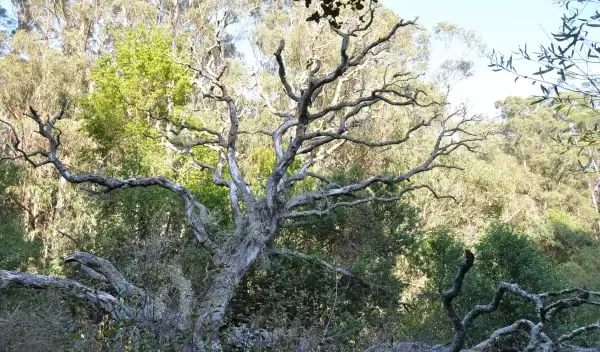
Trees turned to snags: 'Sudden Oak Death' fells California oaks in their prime
Find related stories on the NSF, National Institutes of Health and U.S. Department of Agriculture's Ecology and Evolution of Infectious Diseases (EEID) program at this link.
Sudden oak death, beware.
Crowdsourced science is helping to predict the path of the deadly plant disease, demonstrating the contributions trained citizen scientists can make to large-scale geographic tracking projects.
That's the conclusion of a study of sudden oak death monitoring in California. The results are published in this month's issue of the journal Frontiers in Ecology and the Environment.
Ebola of the plant world
"Sudden oak death is the Ebola of the plant world, the most serious threat to non-agricultural plants," says lead paper author Ross Meentemeyer, director of the Center for Geospatial Analytics at North Carolina (NC) State University.
The disease, which has killed millions of oak and tanoak trees in California and Oregon, can infect up to 60 landscape plant species and spread from nursery stock to residential landscapes.
Starting in 2008, University of California (UC), Berkeley, researchers expanded their sudden oak death monitoring efforts exponentially, thanks to observations from 1,600 trained volunteers who collected leaf samples from trees in metropolitan and urban wildland areas.
Citizen scientists often needed in research
"To answer many science questions, we need the efforts of a large number of people--and the general public can help," says Sam Scheiner, National Science Foundation (NSF) director for the NSF-NIH-USDA Ecology and Evolution of Infectious Diseases Program, which funded the research.
"This study shows that asking local residents to report on the locations of outbreaks of sudden oak death can provide critical information. The result is a better understanding of the spread of this serious plant disease."
Adds Meentemeyer, "We were able to get data from backyards in the San Francisco Bay area, along with other locations.
"Those data were used to develop accurate computer models for the disease's spread, showing that properly trained and educated citizen scientists can collect data that's just as reliable as that of professionals."
Predictions allow for targeted treatments
Accurate predictions about sudden oak death's spread allow scientists to target treatments to the most vulnerable areas, says paper co-author and forest pathologist Matteo Garbelotto of UC Berkeley.
The annual Sudden Oak Death Blitz, which includes extensive publicity during peak periods for the disease, involves high-school students, homeowners, tree specialists, firefighters, teachers and others.
Follow-up evaluation showed that trained citizen scientists were as effective as experts in identifying and collecting diseased tree leaves, whether or not they reported having a professional background in science.
Additional authors of the paper are Monica Dorning and John Vogler of NC State and Douglas Schmidt of UC Berkeley.
